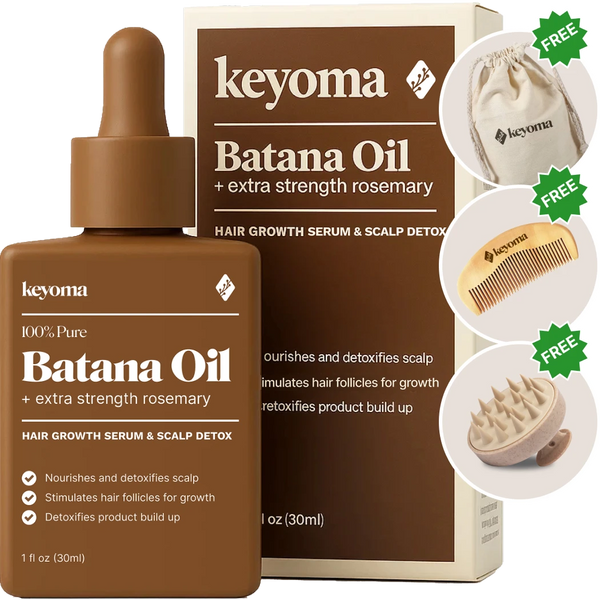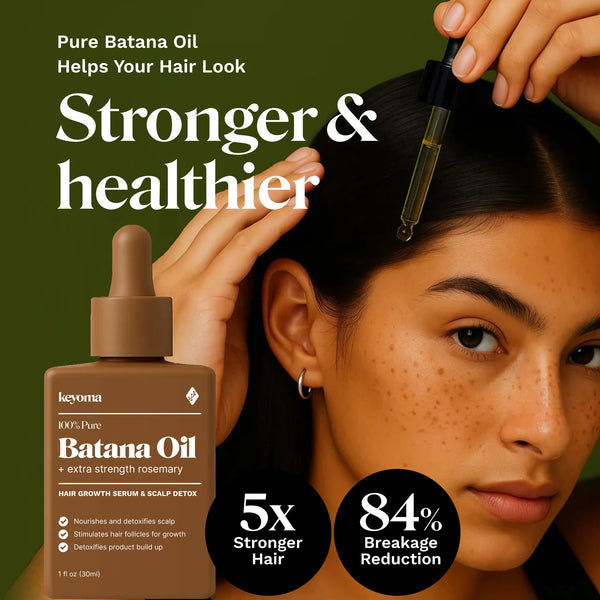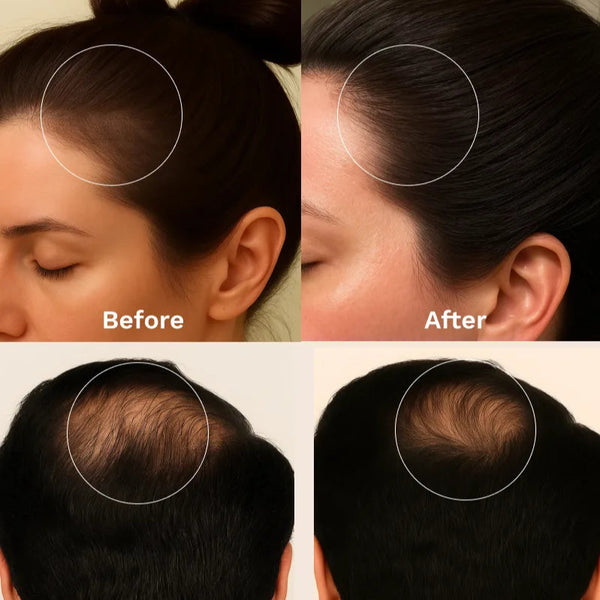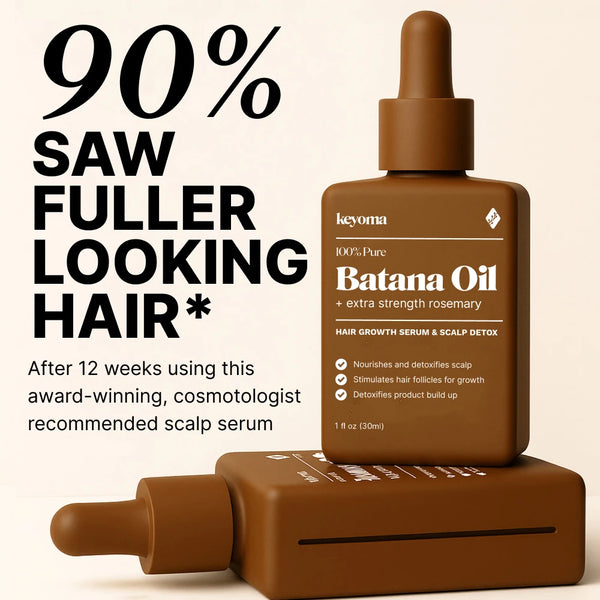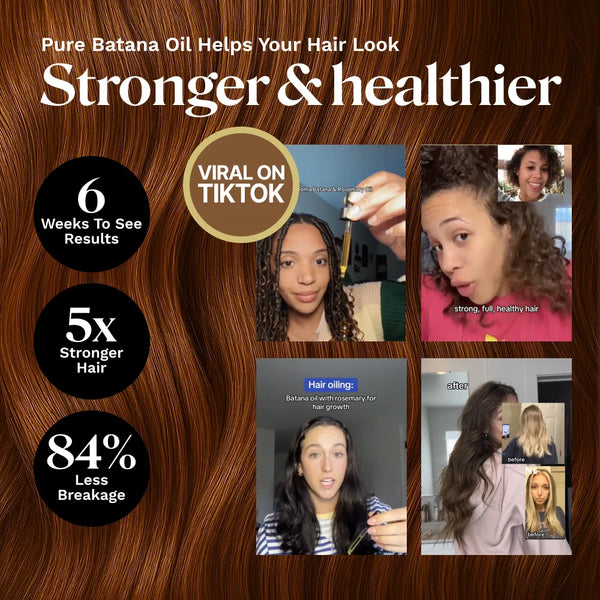In this article
If thinning hair has started to show up (or you’ve noticed relatives your age losing hair), you’re probably wondering how to slow or turn it around.
There are several treatments for hair loss on the market, including both prescription medicines and over-the-counter options.
Not every product you hear about for shedding is FDA-approved. That doesn’t mean off-label medications can’t work or are unsafe, only that they aren’t currently approved to treat hair loss.
Below you’ll find the hair loss options with FDA review, the forms they come in, how people use them, and possible side effects.
Key Takeaways
-
FDA-approved options include drugs and cleared devices, matched to condition and used consistently.
Topical minoxidil treats androgenetic alopecia, requiring daily use, dryness and initial shedding may occur. -
Oral finasteride lowers DHT and maintains growth, not for pregnancy, possible sexual side effects.
-
JAK inhibitors treat severe alopecia areata in adults and adolescents, requiring monitoring for infections.
Do FDA-Approved Hair Growth Products Work?
When you meet with a hair loss specialist, they’ll likely suggest minoxidil and finasteride before other options.
Both medications have been tested in multiple placebo-controlled trials over decades, showing they can treat thinning in generally safe and effective ways.
Oral finasteride can produce about a 70 percent drop in blood DHT. Up to 88 percent of users may see slowing within 3 months. Finasteride usually slows loss but doesn’t stop it completely.
Minoxidil tends to work best when started within the first five years of male pattern hair loss beginning. It can be effective, but responses vary by person.
Evidence for low-level laser therapy continues to grow. A 2021 review found positive effects on growth across seven studies with no serious side effects. Other work suggests pairing laser therapy with minoxidil or finasteride may outperform laser alone.
Still, not all trials are enthusiastic. In a 2023 clinical study, laser therapy was safe but didn’t add extra growth compared with minoxidil in 54 men.
Which Hair Growth Products Are FDA-Approved?
These are the FDA-reviewed choices for growing hair. Some are approved drugs and others are cleared devices. Each fits certain types of loss and needs consistent use to help.
-
Confirm the diagnosis first.
-
Read the label. Drugs receive FDA approval, while devices receive FDA clearance.
-
Match treatment to the cause: pattern loss versus alopecia areata.
-
Stay consistent. Most options require months before changes appear.
-
Know risks and warnings. Avoid finasteride if you’re pregnant or planning pregnancy.
-
Talk with your clinician before using combinations.

1. Minoxidil
Minoxidil, widely recognized by the brand Rogaine, is a commonly used topical for regrowth and carries FDA approval that signals established safety and efficacy. It was first developed as an oral blood pressure medicine, and researchers later noticed hair growth as an unexpected effect, which led to its use for hair loss.
Minoxidil is a vasodilator, meaning it widens blood vessels and increases circulation around hair follicles. By improving nutrient delivery, it can support stronger growth and may wake up dormant follicles. Studies report follicle counts can rise by 12–18% over 48 weeks.
Topical minoxidil is FDA-approved only for Androgenetic alopecia (male-pattern baldness). Trichologists may also use it off-label for other types, including:
-
Alopecia areata
-
Chemotherapy-induced hair loss
-
Scarring alopecia
-
Monilethrix
-
Hereditary alopecia or hypotrichosis
Oral minoxidil is FDA-approved only for high blood pressure in patients who haven’t responded to other treatments.
Forms and How to Use
Minoxidil comes as foams, sprays, and solutions in 2% and 5% strengths; 5% is stronger. Apply once or twice daily to a clean, dry scalp, focusing on thinning areas. I noticed applying to a dry scalp reduced dripping and improved coverage. Consistency matters because results often take 3 to 6 months to show.
Possible Side Effects
Minoxidil is generally well tolerated, but you may notice:
-
Scalp dryness or irritation: often improves with gentler hair products.
-
Initial shedding: early extra fallout can occur, then settles as sturdier hairs grow.
-
Dizziness or heart palpitations: uncommon; seek medical advice if these occur.
Bottom line: stay patient and consistent with minoxidil to see benefits.
2. Finasteride
Finasteride, sold as Propecia®, is a DHT blocker that takes a more targeted approach than minoxidil. The FDA has approved it for:
-
Male pattern baldness
-
Benign prostate hyperplasia (prostate enlargement not due to cancer)
Finasteride comes in both topical and oral forms, but only the oral tablet is FDA-approved. It works by lowering dihydrotestosterone (DHT), the hormone that shrinks follicles and leads to thinning. Blocking testosterone’s conversion can cut DHT by up to 70%, helping preserve hair and sometimes improving thin areas.
If you want a hormone-focused option for androgenetic alopecia, finasteride can be effective, especially long term since it targets the underlying trigger.
Forms and How to Use
Finasteride is typically a once-daily oral pill. Take it consistently, since missed doses reduce benefit. It isn’t suitable for women who are pregnant or may become pregnant.
Possible Side Effects
Most people do well, but potential effects include:
-
Lower libido: sometimes improves with continued use.
-
Erectile dysfunction: uncommon but reported.
-
Mood changes: rare reports of anxiety or mood shifts.
Discuss risks and benefits with a healthcare professional before starting, given its hormonal effects.
3. Laser Phototherapy (LPT)
The third FDA-cleared option is Laser Phototherapy (LPT), also called Low-Level Laser Therapy (LLLT). Unlike drugs, LPT uses light energy to stimulate cellular activity in follicles. Devices cleared by the FDA include the Theradome Hair Helmet, which emits specific wavelengths to support blood flow and cell activity.
It may sound high-tech, but the idea is simple: targeted light nudges follicle cells to work harder, helping thicken existing hairs and wake up some that are quiet.
Forms and How to Use
LPT comes as combs and wearable helmets such as Theradome. Use devices a few times per week for about 20 minutes per session. I found calendar reminders kept me consistent with sessions each week. Because it’s noninvasive, many people consider it when they prefer to avoid pills or topicals.
Possible Side Effects
LPT typically has a low side effect profile:
-
Mild scalp warmth or tingling: usually harmless and short-lived during use.
Unlike minoxidil or finasteride, LPT doesn’t affect hormones and rarely causes scalp irritation, which many find appealing.
4. Deuruxolitinib (Leqselvi)
Leqselvi is an oral JAK inhibitor approved on July 26, 2024 for adults with severe alopecia areata. It blocks immune signals that attack follicles. Clinicians consider it promising, and pivotal trials showed meaningful scalp regrowth compared to placebo.
FDA-approved use: adults with severe alopecia areata
Forms and How to Use
Most patients take 8 mg twice daily, with or without food. It’s a tablet and should be taken as prescribed.
Possible Side Effects
Serious infections and other class warnings: ask about screening and monitoring protocols.
Common effects may include headache, acne, and higher cholesterol for some people.
Your prescriber may order periodic blood work to check safety.
5. Ritlecitinib (Litfulo)
Litfulo is an oral, selective JAK3 and TEC kinase inhibitor for severe alopecia areata. In a large randomized trial of patients 12 and older, once-daily ritlecitinib produced clinically meaningful scalp regrowth and also improved brows and lashes in many participants.
FDA-approved use: adolescents and adults 12+ with severe alopecia areata
Forms and How to Use
The approved dose is 50 mg once daily. Take it at the same time each day unless your prescriber advises differently.
Possible Side Effects
Class JAK warnings include risk of serious infections and other immune-related problems.
Some people notice acne, headaches, or mild lab changes. Your team may screen for TB and monitor labs during treatment.
6. Baricitinib (Olumiant)
Olumiant is a JAK1/2 inhibitor and became the first systemic therapy approved for adults with severe alopecia areata in June 2022. Two phase 3 trials showed better regrowth than placebo at 36 weeks.
FDA-approved use: adults with severe alopecia areata
Forms and How to Use
A common starting dose is 2 mg once daily. If the response isn’t adequate, some patients move to 4 mg daily, then taper to 2 mg once growth is maintained.
Possible Side Effects
Class warnings include serious infections, blood clots, cardiovascular events, and potential malignancy risk.
Common effects can include acne and changes in lipids or creatine kinase.
Stopping treatment after regrowth often leads to loss of benefit, so ongoing therapy may be needed.
Choose Proven Options and Track Results With Keyoma
FDA-approved options like minoxidil, finasteride, low-level laser devices, and newer JAK inhibitors can help when they match your diagnosis and you use them consistently. Work with a clinician, follow the timelines, and track progress over months, not days.
To keep your routine gentle and reduce side effects, start with a natural base. Try Keyoma’s Batana Oil with Rosemary as your daily scalp oil, or use it alongside your current treatment to add moisture, slip, and everyday scalp comfort.
Featured Product
100% Pure Batana Oil + Rosemary
↓Best Batana Oil to Buy↓
1 Month
Subscribe & Save
- 30-day supply delivered monthly $35
- 30% off for life $6
- Free haircare essentials kit $33
- Free custom wooden comb $10
- Free scalp massager $15
- Free eco-friendly travel bag $8
- 30-Day Money Back Guarantee
- Free Shipping
- Online portal for easy cancel, skip, or pause.
1 Month One Time Purchase
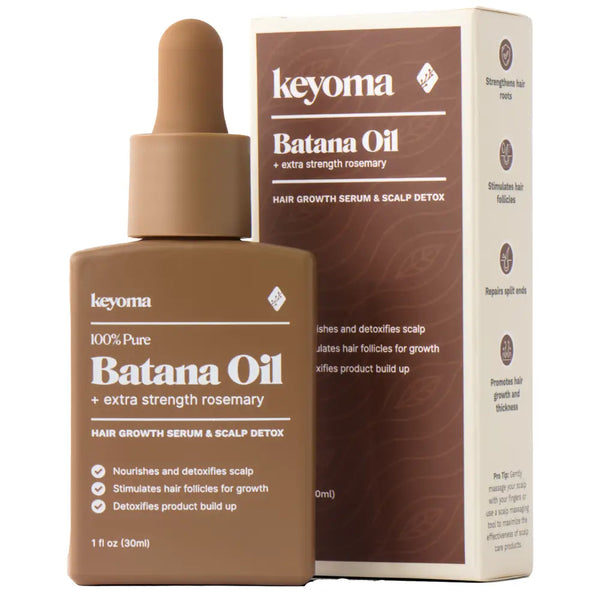
- 30-day supply $50
- 30% off for life $6
- Free haircare essentials kit $33
- Free custom wooden comb $10
- Free scalp massager $15
- Free eco-friendly travel bag $8
Your Cart
Your Cart is empty
Let's fix that
You might like...
Search our store



